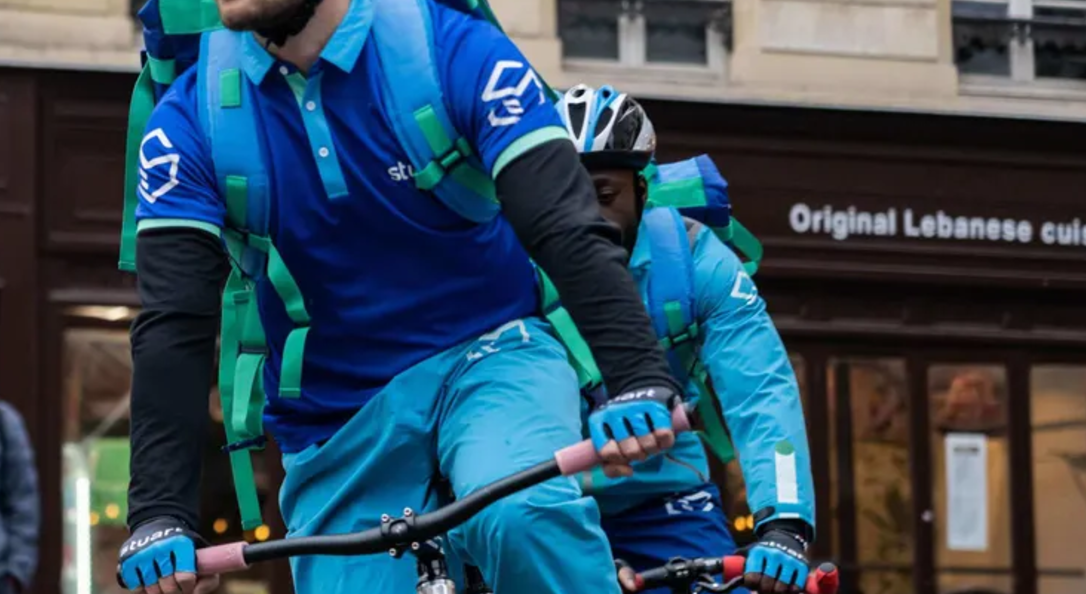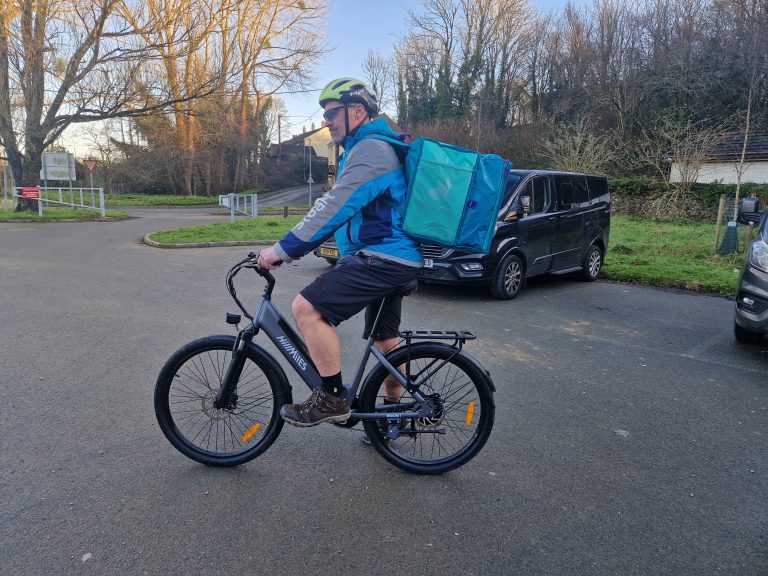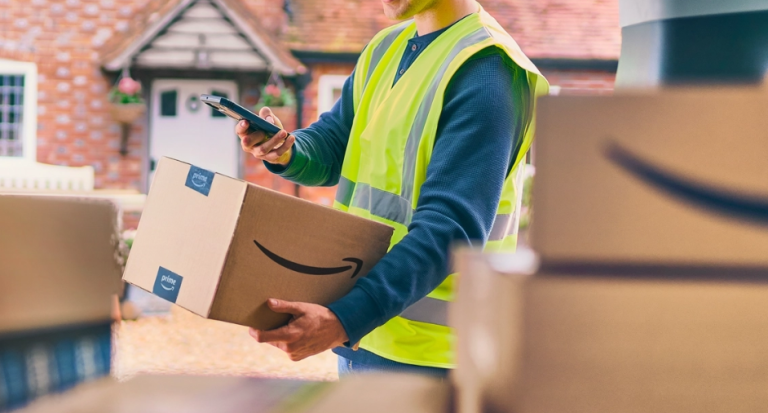What’s it like working for Stuart Delivery?
If you’re considering a food delivery job, there are plenty of options. Stuart Delivery are one of the more popular options, and offer flexible hours delivering for well-known high street names like Tesco and Papa John’s Pizza. While it can be a decent way to earn extra cash, it comes with its own set of challenges. Having spent the past few months delivering for Stuart as a side hustle, I’m sharing a firsthand look at what the job is really like.
The Basics of Stuart Delivery
Stuart is an on-demand delivery service that partners with a wide range of businesses. You’ll deliver everything from Tesco Whoosh grocery orders to Pappa John’s Pizza and Co-op essentials. You’ll also be delivering age-restricted items like alcohol, cigarettes and vapes.
The variety is one of the things that sets Stuart apart from other gig platforms. One minute, you might be delivering a pizza; the next, you’re lugging groceries across town. It keeps things interesting, though it can also mean some unexpected challenges—like trying to fit an oversized Tesco order into your bag or carrying an extra 10kg of alcohol on your back.
How to Sign Up for Stuart
Getting started with Stuart is pretty simple, and the process doesn’t take too long. Here’s what you need to do:
- Head to the Stuart Website: The first step is to register on their website. You’ll need to fill in some basic details, like your name, email, and location, to get started.
- Upload Your Documents: Stuart will ask for proof of identity, your right to work in the UK, and vehicle details. If you’re planning to use a bike or e-bike, you won’t need insurance, but for scooters or cars, you’ll need valid hire and reward insurance that covers delivery work. In addition, you’ll need to complete a DBS check via a third-party company called Stirling.
- Complete the Onboarding Process: Once your documents are approved, you’ll be invited to an onboarding session. This is usually online and gives you all the info you need to start delivering, like how to use the app and what to expect on the job.
- Download the Stuart App: After onboarding, you’ll get access to the Stuart app. This is where you’ll log in, accept jobs, and track your earnings.
- Start Delivering: Once you’ve got everything set up, you’re good to go. Log into the app, go online when you’re ready, and start accepting deliveries.
The whole process is designed to be quick and straightforward, so you can be up and running within a couple of weeks if you’ve got all your documents sorted.

What’s the Best Transport for Stuart Deliveries?
One of the big decisions when working for Stuart is choosing the right transport. Whether you go with a bicycle, e-bike, moped, or car, each option has its pros and cons. What works best will depend on where you’re working, the types of deliveries you’re doing, and how much you’re willing to spend on running costs. Here’s a breakdown to help you decide.
- Bicycle: A standard (unassisted) bike is the simplest and cheapest option, ideal if you’re working in a flat area with short distances between jobs. There are no fuel costs, no insurance, and minimal maintenance expenses—just tyres, a bit of chain oil, and maybe the odd repair here and there.
- E-Bike: An e-bike gives you the best of both worlds. You get pedal assistance to help with hills and heavy loads, but you still avoid most of the running costs of a moped or car. E-bikes are ideal in hilly cities like Plymouth, though battery life can limit how long you can work. On hilly terrain, I’ve found the battery range maxes out at around 3–4 hours, so it’s something to bear in mind.
- Moped: A moped is a step up in terms of speed and carrying capacity, making it a popular choice for many delivery riders. With a moped, you can take on longer jobs and handle heavier loads more comfortably. You’ll need “hire and reward” insurance, which can be pricey, as well as fuel costs, but it’s still cheaper to run than a car.
- Car: Using a car gives you the most flexibility and carrying capacity, which is ideal for big grocery orders or bulky items. Stuart even pays slightly more for car deliveries to offset the higher running costs. However, a car isn’t always the most practical option, especially in city centres where traffic and parking can slow you down.
I’ve been using the Engwe L20 and L20 Boost e-bikes for delivery. If you’re working in a flat city and mainly doing short deliveries, a bicycle or e-bike is the most cost-effective option. An e-bike is a game-changer for hillier areas, helping you handle tough terrain without wearing yourself out.
If you plan to focus on bigger grocery orders or work in a more spread-out area, a moped or car might be worth the extra expense for the added speed and carrying capacity. Just remember the higher running costs and parking challenges in busy areas.
Whatever you choose, make sure it suits your area, the types of deliveries you want to do, and your budget for running costs. With the right setup, you’ll be ready to tackle your Stuart shifts in style.
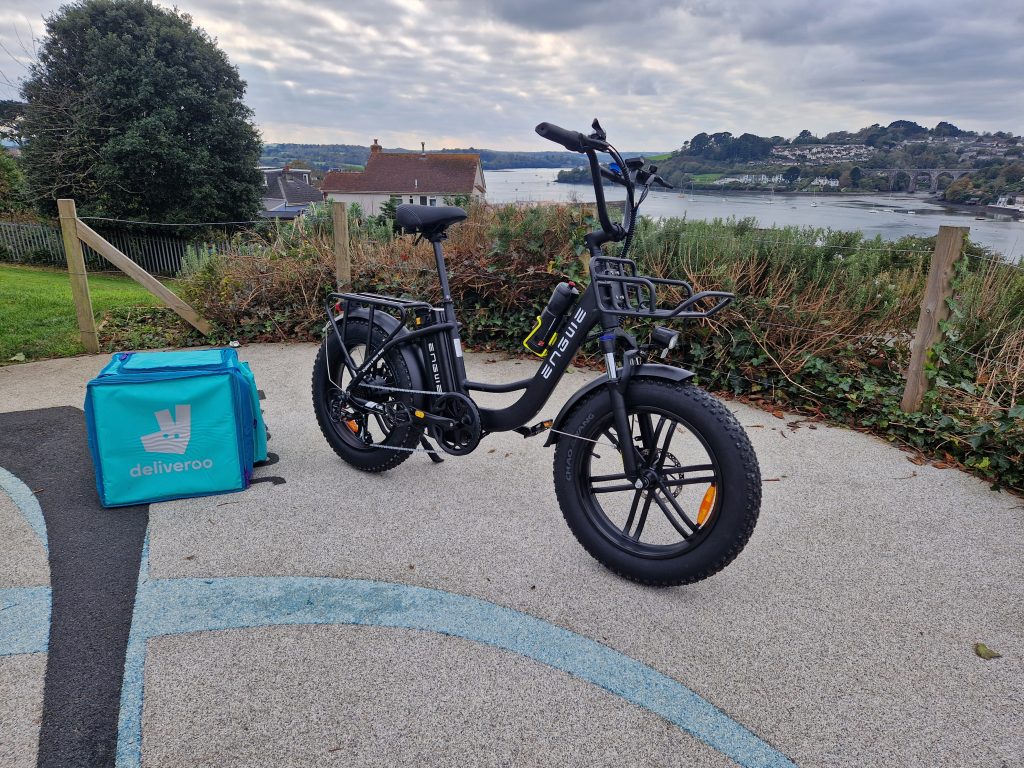
What Equipment Will I Need?
Getting the right gear for working as a Stuart rider is key to making your shifts more comfortable and safe, especially if you’re on a bike or moped. Here’s what I recommend:
- Waterproof Jacket and Leggings: A good waterproof jacket is a must, especially during the unpredictable British weather. Go for something hi-vis so you’re easily seen by other road users. Waterproof leggings are a lifesaver when cycling or riding a moped in the rain.
- Food Delivery Bag: You’ll need a sturdy, thermal food delivery bag to carry orders safely. I use a Deliveroo bag I picked up unused from Facebook Marketplace for just £10—it does the job perfectly.
- Mobile Phone Holder: Navigating while riding is much easier with a phone holder. I use a Quadlock, which is reliable and keeps my phone secure even on bumpy roads.
- Power bank: The Stuart app can drain your phone’s battery quickly, especially on longer shifts. A decent power bank is essential to keep your phone charged and avoid running out of juice mid-delivery.
- Helmet and Gloves: Safety first! A decent helmet is non-negotiable, and gloves are a big help in cold weather or for protecting your hands during long shifts.
- Lights for Your Bike or E-Bike: If you’re cycling, make sure you’ve got good-quality front and rear lights, especially for night shifts or winter evenings.
- Base Layers: When it’s cold, base layers are a game-changer. They keep you warm without adding too much bulk, so you can move comfortably.
Having the right kit makes all the difference, keeping you safe, comfortable, and ready to tackle any shift, rain or shine. Don’t forget the power bank; it’s a lifesaver when the app starts draining your phone!
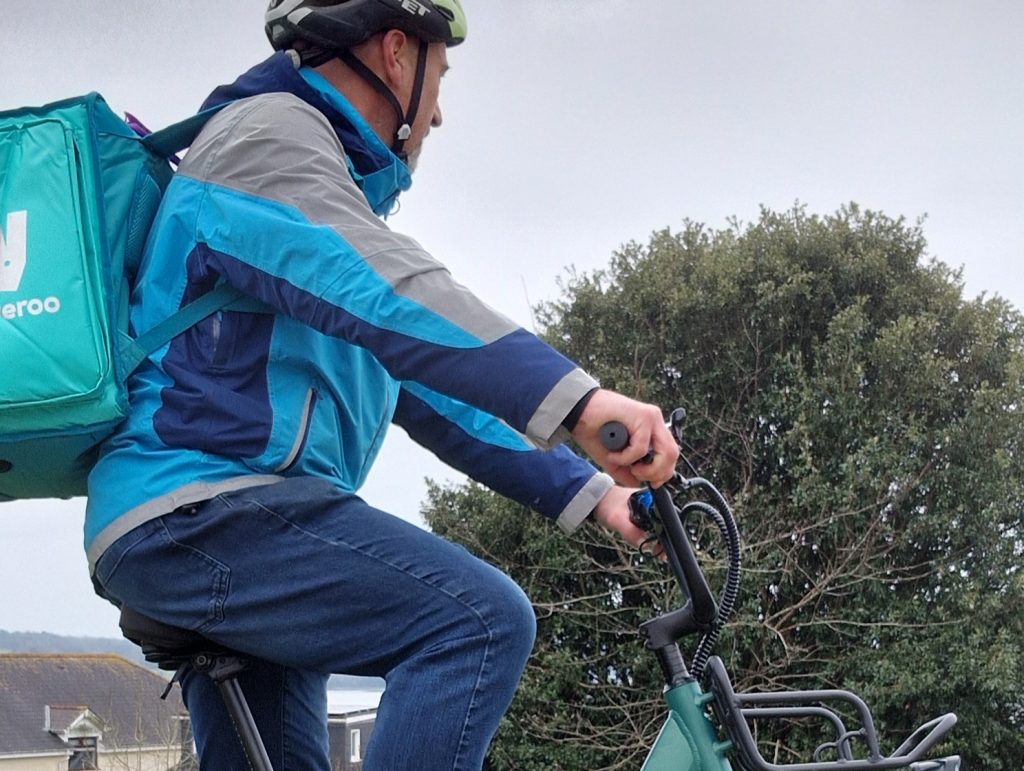
Real-World Earnings
Pay with Stuart can be unpredictable, depending on the time of day, day of the week, and type of deliveries available. On a typical weekday, I barely make £12 an hour. However, during busier periods—usually weekends—you can earn more if you’re lucky enough to get the right jobs. The best I’ve managed was around £18 an hour, but that was an exception rather than the norm, and I haven’t had a shift like that since.
- Delivery Distance vs. Pay: Some deliveries feel worth it, while others don’t. For example, Tesco Whoosh deliveries in Plymouth are usually 2-3 miles from the store, but the steep hills can slow you down and sap your energy. Co-op jobs tend to be shorter but don’t pay as well. Then there are the outliers—like Papa John’s deliveries, where I’ve cycled 6 miles for £10 or £11. That might sound good, but considering the time it takes, it’s not always the best deal.
- Heavy Loads: The variety of items you deliver also affects how much effort is involved. Groceries often mean heavy bags, and I’ve had Tesco orders where I couldn’t even fit everything into my delivery bag. Alcohol deliveries are another one to watch out for—carrying 10kg of beer or wine on your back isn’t the most comfortable way to earn a living.
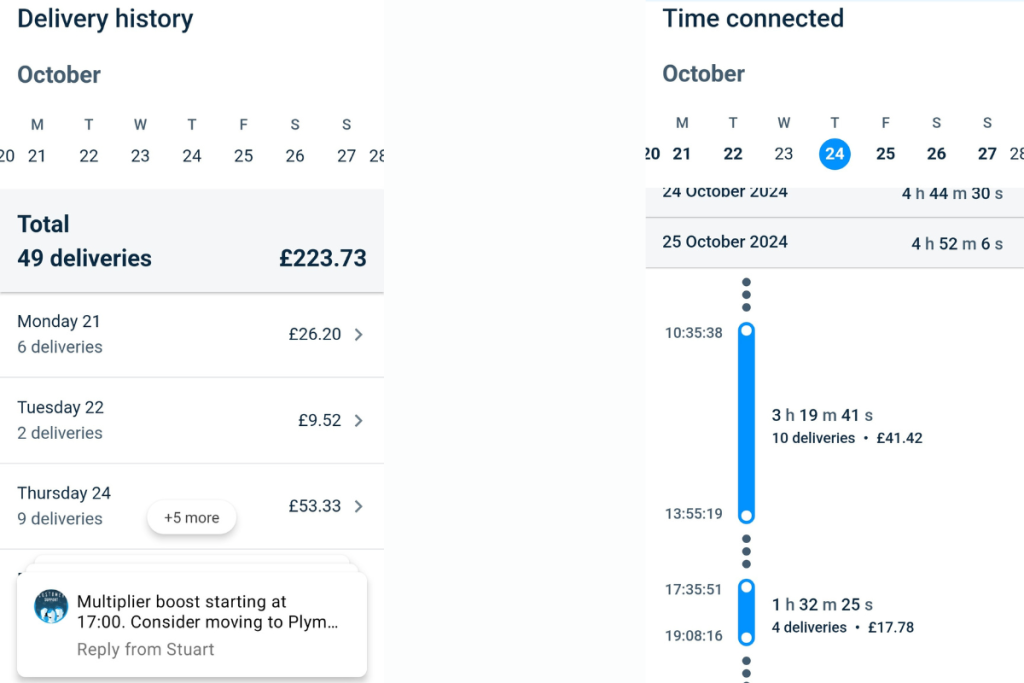
The Challenges of the Job
Like most gig economy work, being a Stuart rider has its ups and downs. Here are some of the main challenges:
- Weather: The British weather is no joke, especially in the winter. Rain, wind, and freezing temperatures can make riding downright miserable. Decent waterproof gear helps, but there’s only so much you can do when it’s pouring down.
- Hills and Battery Range: If you’re using an e-bike, the hills in places like Plymouth can be a killer. I’ve found that 3-4 hours is the max I can deliver before the battery runs out, which cuts into how much work I can take on in a day. Flat cities are likely easier, but for those of us in hillier areas, it’s something to consider.
- Long Deliveries: While most jobs are fairly local, some can send you further afield. Those long Papa John’s runs might pay well on paper, but when you factor in the time spent riding, it can feel like more hassle than it’s worth.
Despite the challenges, Stuart has its perks, and for many riders, the flexibility is the biggest one. You can log on and off when it suits you, so you’re not tied to set shifts. If you want to work mornings one week and evenings the next, no one’s stopping you.
As a standalone gig, it’s unlikely you’ll earn enough money with Stuart, but if you work smart and combine it with other side hustles, you can maximise your earning potential.
Alternatives to Stuart and Maximising Your Earnings
One of the best ways to boost your earnings is by signing up to multiple delivery platforms. This gives you access to more jobs and helps fill the gaps when one app is quiet. But it’s not as simple as juggling everything at once—you’ve got to be smart about it to avoid issues.
- Deliveroo: Deliveroo is one of the most well-known delivery platforms in the UK, and for good reason. You’ll mainly be delivering food from restaurants, though they’ve also branched into grocery deliveries with partnerships like Waitrose and Co-op. Busy times, like meal hours, are when you can rake in the most cash. It’s great for flexibility, but you’ll need to compete with other riders for jobs during quieter periods.
- Uber Eats: Like Deliveroo, Uber Eats focuses on takeaway deliveries, but it’s entirely on-demand. This means no shifts—you log in and grab jobs as they come up. Pay per job can vary depending on distance and how busy the app is, so evenings and weekends are typically the most lucrative times. Uber Eats is ideal if you’re looking for an easy app to dip in and out of during the day.
- Just Eat: Just Eat tends to offer more stability as it often provides scheduled shifts, meaning you’re guaranteed a minimum number of jobs within that time. However, the ability to pick up shifts varies depending on where you live, and the pay can sometimes feel less competitive compared to apps like Uber Eats or Deliveroo. It’s worth keeping in mind if you prefer a bit more predictability.
- Amazon Flex: If you’ve got a car and want to mix things up, Amazon Flex offers parcel delivery blocks instead of food. The pay can be decent for short stints, and it’s another option for filling quiet times during your day. It’s not for everyone though, and sometimes you can be delivering 40-50 parcels over 4 hours.
- Gophr: Gophr is all about courier work, so you might be delivering anything from important documents to larger parcels. It’s not as consistent as food apps, but the variety keeps things interesting, and the pay is often good for jobs that match your vehicle type.

The key to earning more is being on multiple platforms. This lets you switch between apps depending on demand and take advantage of the busiest times. For example, you could start your day with Stuart grocery deliveries, then hop on Deliveroo during lunch hours when food orders spike, and maybe grab a few Uber Eats jobs in the evening. By stacking the right jobs, you can keep yourself busy and boost your income.
- Know the Peak Times: Food delivery apps like Deliveroo and Uber Eats are busiest during lunch (12–2 pm) and dinner (6–9 pm), while Stuart’s grocery and retail deliveries might have steady demand throughout the day. Knowing when each app is likely to be busy helps you plan your shifts.
- Stick to One Job at a Time: While it’s tempting to accept jobs on different apps simultaneously, this is a risky move. Delivering for two platforms at the same time might seem like a clever way to squeeze in extra jobs, but it can easily backfire. Late deliveries can lead to bad ratings, and getting caught can result in being banned from the platform altogether. It’s just not worth the hassle.
- Keep an Eye on Mileage and Effort: Not all jobs are created equal. Some apps, like Stuart and Just Eat, might offer long-distance deliveries that don’t pay enough for the time and effort. Learning to quickly assess whether a job is worth it is key to making the most of your time.
- Plan Your Area: Focus on busy, densely populated areas where you can knock out multiple jobs without travelling too far. Urban centres tend to have more demand, shorter distances, and better pay-per-mile compared to rural areas.
Having a few delivery apps in your arsenal is the best way to stay busy and maximise your earnings, but you’ve got to use them wisely. Sign up for platforms that complement each other, like food apps for peak meal times and parcel or grocery services for slower hours. Just make sure you’re sticking to one job at a time to avoid getting banned and keep track of which platform is busiest at different times of day.
With a bit of planning, working for multiple platforms can give you the freedom to earn more while staying in control of your schedule. Just be prepared for the occasional heavy load, long ride, or rainy day—it’s all part of the gig.

Final Thoughts
Stuart delivery is a decent option if you’re looking for flexible, on-demand work and don’t mind the physical side of things. The pay can be decent, especially on busy days, but you’ll need to be prepared for the heavy loads, long distances, and unpredictable weather.
If you’re in a flat city and can avoid hills, or if you’ve got a good e-bike with decent battery life, it’s worth a shot. But if you’re somewhere hilly or relying on a standard bike, expect more of a grind. Like any gig economy job, it works best if you manage your expectations and plan your time wisely. All in all, it’s a decent way to bring in some extra cash, but it’s not without its fair share of effort.

